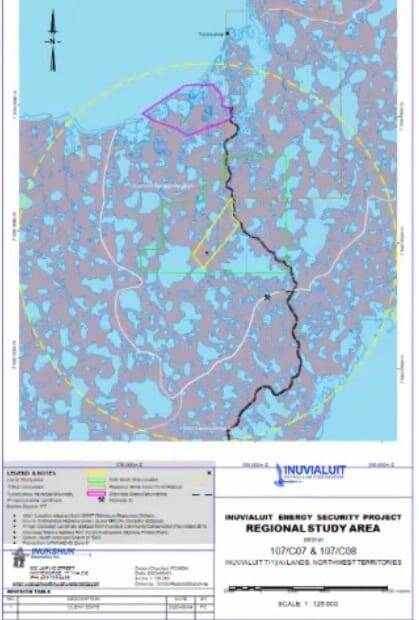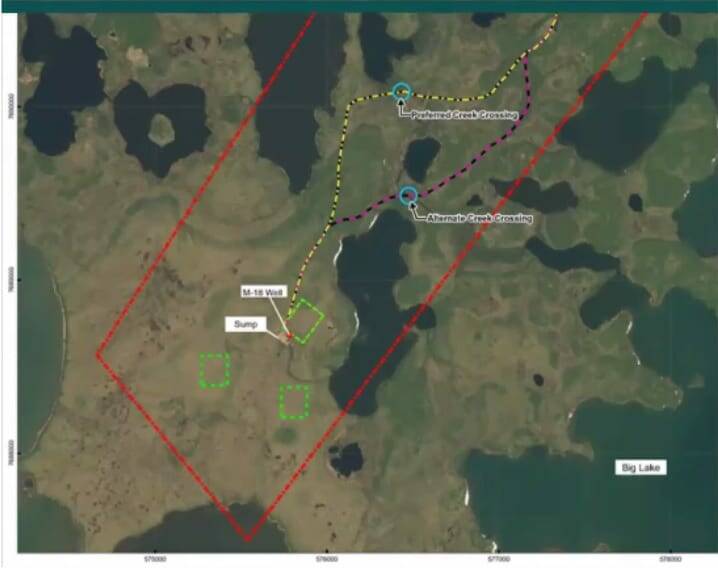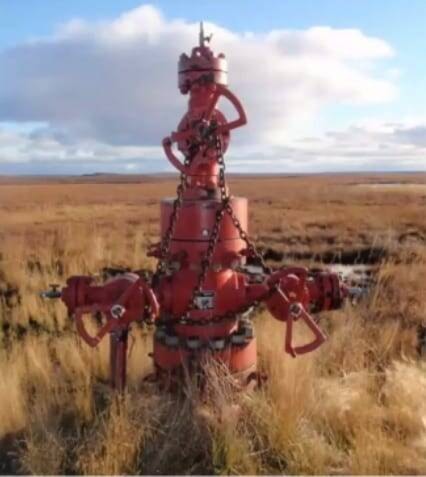Navigating regulatory hurdles has delayed plans for the resumption of the TUK M-18 natural gas well.
An update on the Inuvialuit Energy Security Project (IESP) was delivered to Inuvik Town Council at their Nov. 7 committee meeting.
“We were really hoping that we would have full road construction underway right now to get into M-18,” said IESP Operations Leader Travis Balanski. “The winter access trail is not adequate for 365 day access so we need to get the all-season road in there.
“We’re about two to two-and-a-half years from production based on where we stand today.”
A conflict over who has authority over the road construction has led to a delay in completing the access road to the site, which Balanski said will in turn delay further development. The road will not be built until either next spring or fall.
Ultimately, the goal is to construct a liquefied natural gas producing facility to provide LNG to the Inuvik Power Station and other power stations in the area when they are converted to LNG. While natural gas is still a fossil fuel that produces carbon dioxide and other greenhouse gases, Balanski noted the reduction in GHG emissions will be significant compared to the emissions currently created by trucking tank after tank of the fuel from Alberta. Balanski said the Inuvialuit Regional Corporation (IRC) is estimating a savings of 20,000 tonnes per year of CO2 emissions, but if more power plants in the area convert from diesel to LNG that savings could grow.
The facility has the added goal of producing propane and synthetic diesel for local consumption. Balanski said all locally made products are meant to stay within the region.
“The intention here is to make sure that we’re keeping all of the products in the ISR (Inuvialuit Settlement Region) and the greater Beaufort region,” he said. “We don’t want to do the opposite of what we got right now, where we’re trying to ship everything into the Beaufort Delta.
“We don’t want to have a bunch of products that we’re producing up there get leaked out of the region. So we’re really trying to make sure we maximize the utilization of M-18.”
Located just southwest of Tuktoyaktuk, the 3,000-metre deep TUK M-18 has been out of service for over a decade. But efforts to resurrect the well are moving quickly. The project cleared environmental screening in 2021 and recently the rigours of the Canada Energy Regulator. Here the IRC had argued the Inuvialuit Land Agreement is adequate for road approval, but the CER ruled the decision its to make. To appease the CER and avoid stiff fines, the IRC will wait for final approval on the road to begin construction.
Other setbacks include cost overruns caused by inflation and the logistics of construction in the Arctic. Balansky said the Inuvialuit Petroleum Corporation was looking at how it could reduce the costs of the project to ensure an affordable end-product.
On the ground, workers built a winter access road and remediated the drilling sump. Balanski said the project employed over 50 local people and brought in almost $5 million in contracts. Monitoring for wildlife, environment and permafrost conditions is ongoing.
Balanski said once the project gets approval from the CER, the rest of the project could proceed. The facility, dubbed the IESP Energy Centre, could begin operations in 2025.
Natural gas is still a fossil fuel, but it’s considered cleaner than diesel because it produces less sulphur oxide and nitrogen oxide, and releases 40 per cent less carbon dioxide. And, it doesn’t produce soot or heavy metals. LNG dissipates when spilled on water or soil and leaves no residue.


